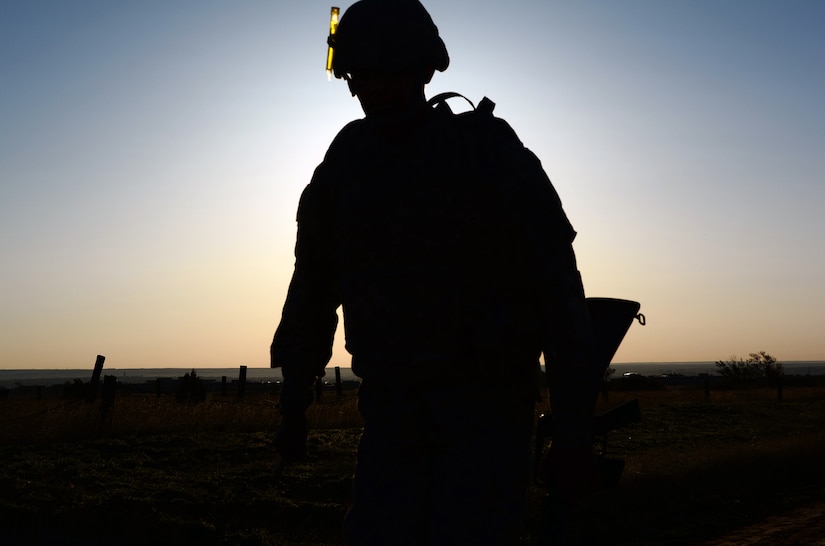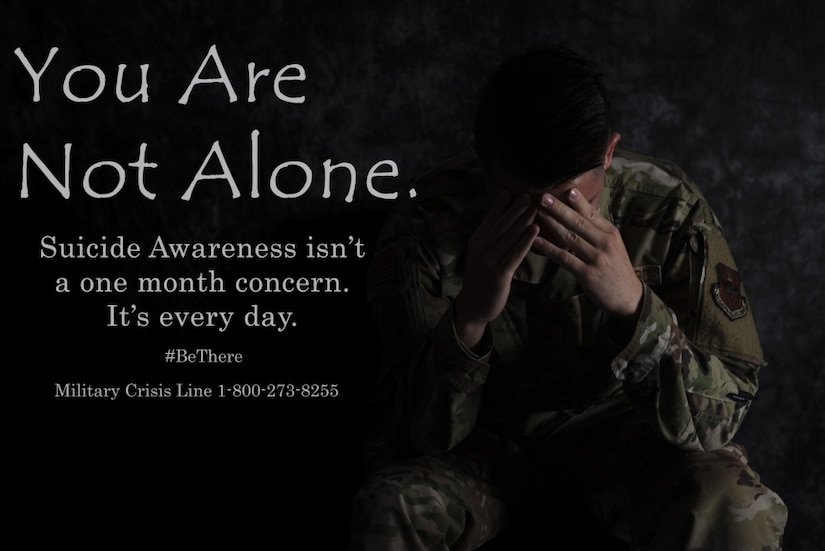Dr. Karin A. Orvis released the Annual Suicide Report for calendar year 2019 in a Pentagon press briefing.
The director said the defense department has the responsibility of supporting and protecting those who defend the United States.
"Suicide is a national public health issue affecting people from all walks of life," she said. "It's a growing issue that affects all ages.
"The DOD has the responsibility of supporting and protecting those who defend our country," Orvis said, "and it is imperative that we do everything possible to prevent suicide in our military community."

The 2019 ASR builds on existing reporting in the DOD Suicide Event Report Annual Report. The ASR gives researchers and suicide prevention practitioners earlier rates for service members and available data on suicide among military families, followed by the DODSER's detailed examinations of risks and contextual factors that are associated with suicide for that calendar year.
This year's ASR continues the department's commitment to transparency and accountability on challenging issues such as the prevention of suicide. It is coordinated with the military services and DOD leadership to make sure all data and information are accurate.
The 2019 report stated that 498 service members died by suicide, she said, adding that young and enlisted service members are our military population of greatest concern. Orvis added that suicide is often a sudden and impulsive act.
The health, safety and well-being of the military community is essential to the readiness of the total force, the director noted, adding:
- Suicide is a complex interaction of factors that vary among individuals. Because there is no one "fix," the DOD is committed to a comprehensive, multi-faceted approach to prevent suicide.
- Suicide rates in civilian populations are rising; the military is not immune to the challenges of suicide.
- After accounting for age and gender, military suicide rates are comparable or lower than the U.S. population.
Orvis said since the release of last year's report, the department has worked to increase coping skills among young and enlisted members, enhanced access to resources for National Guard members, increased support to military families, furthered program evaluation efforts and has taken proactive steps to mitigate potential impacts from COVID-19.
What the Report Says
Compared to the past two years, the 2019 suicide rate for active duty service members is statistically comparable to 2017, while the reserves and National Guard rates are statistically lower than 2017, the director said.
Long term, from 2014 to 2019, the active duty rate increased, while there is no statistical evidence of an increase or a decrease for the reserve and National Guard. The department found continued heightened risk for young and enlisted members, Orvis said.
Important strides have been made in the National Guard. The rates are now comparable to the U.S. population and statistically down from 2017.

"We are cautiously optimistic, focused on long-term, sustained improvement," Orvis said.
The most recent available data on military families is from 2018. Based on that data, 193 military family members died by suicide that year. The 2018 rates for family members are also consistent with the 2017 rates.
"[For] our data, … after adjusting for the age and sex differences across the military and civilian populations — with our military population being younger and comprising more males — the military has comparable or lower rates to the U.S. population," she said.
At this time, the director said, it is too early to determine whether suicide rates will increase for 2020.
"We will need to have the full year of data and investigations completed to determine [the] cause of death," she added.
Future Steps
Based on the findings from the report, the DOD must target its population of greatest concern and continue to support families. Efforts will focus on:
- Young and enlisted members: Address perceived barriers to seeking help and encourage use of support resources, address common risk factors with an integrated violence prevention approach and support rollout of a new "988" crisis line number.
- Military families — Teach influencers such as spouses, chaplains and students in DOD schools of risk factors for suicide, encourage help-seeking and promote safe storage of lethal means.
- Measuring effectiveness: Continue to assess program effectiveness via the DOD-wide program evaluation framework and enhance research, data and evaluation capabilities.
The way people communicate about suicide influences perceptions, attitudes and behaviors, such as how people view or make decisions to seek help, Orvis said.

"We encourage using resources at www.reportingonsuicide.org when communicating about the report's findings and other suicide-related communications."
The department cannot prevent suicide alone; it must continue to collaborate on research, data sharing, outreach and other key efforts with federal agencies, nonprofits and academia, she noted.
"Suicide is preventable," Orvis said. "We continue to do more, including targeting our initiatives to our young and enlisted members while continuing to support our military families. We will not relent in our efforts. We owe this to our service members and families defending our nation."






No comments:
Post a Comment